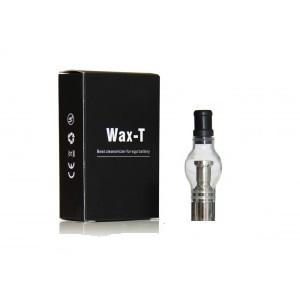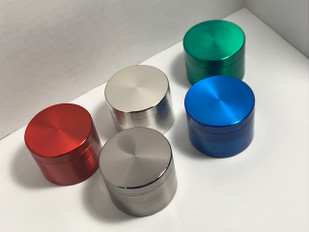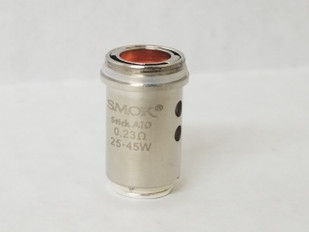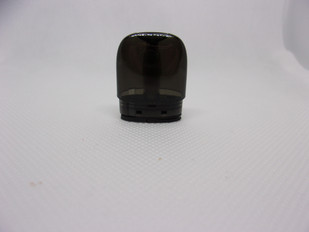- Home
- The Vape Mall Blog
- What are Phytonutrients and Why are They Used in Hemp-Based Products?
What are Phytonutrients and Why are They Used in Hemp-Based Products?
Posted by on
 Phytonutrients,
also known as phytochemicals, are natural compounds produced by plants.
They are found in fruits, vegetables, grains, legumes, nuts, and seeds. While not essential for keeping you alive,
unlike vitamins and minerals, phytonutrients could help prevent diseases and
keep your body working properly, but more research is still needed on this.
Phytonutrients,
also known as phytochemicals, are natural compounds produced by plants.
They are found in fruits, vegetables, grains, legumes, nuts, and seeds. While not essential for keeping you alive,
unlike vitamins and minerals, phytonutrients could help prevent diseases and
keep your body working properly, but more research is still needed on this.
Phytonutrients are best obtained through a varied and balanced diet rich in colorful fruits and vegetables, as they work synergistically with each other and with other nutrients in food. They’ve even been linked to a variety of health benefits, such as reducing the risk of heart disease, cancer, inflammation, and neurological diseases. Still though, their specific effects can vary greatly, and research is still ongoing to fully understand their benefits and functions, especially when it comes to how they’re used in CBD products, as you will find out here today.
What are Some Well-Known Phytonutrients?
Now, there are thousands of recognized phytonutrients, and they’re often categorized into different groups based on their chemical structure and function. Some well-known categories include:
ØCarotenoids: Found in the red, yellow, and orange pigments of fruits and vegetables, they are good for eye health and may reduce the risk of certain cancers. Examples include beta-carotene, lycopene, and lutein.
ØFlavonoids: Found in a variety of fruits, vegetables, and grains, these phytonutrients are known for their antioxidant and anti-inflammatory properties. Examples include quercetin, catechins, and anthocyanins.
ØGlucosinolates: Found in cruciferous vegetables like broccoli, Brussels sprouts, and kale, these compounds may help prevent cancer.
ØPhenolic Acids: This group includes stillbenes and lignans, commonly found in fruits, vegetables, whole grains, and seeds. They are known for their antioxidant properties.
ØAlkaloids: Found in certain bitter-tasting plant foods, they can have potent biological effects.Top of Form
How are Phytonutrients Infused into Hemp-Based Products?
The overall process of infusing these phytonutrients into various hemp-based products varies depending on the product type and the desired effects. Below is general overview of how phytonutrients are infused into different hemp-based products:
1.Extraction: The first step is to extract phytonutrients from the hemp plant. This is typically done using methods like CO2 extraction, ethanol extraction, or oil infusion. These methods help to isolate the desirable compounds (like cannabinoids, terpenes, and flavonoids) while leaving behind unwanted plant matter.
2.Purification and Concentration: After extraction, the resulting substance may go through further purification processes to remove any residual solvents or impurities. This can involve processes like winterization (to remove fats and waxes) and distillation. The goal is to concentrate the phytonutrients to desired levels.
3.Formulation: Once the phytonutrients are extracted and purified, they are then formulated into various products. This could include mixing them with carrier oils (like MCT or hemp seed oil) for tinctures, incorporating them into creams or balms for topical products, or infusing them into edibles like gummies or capsules.
4.*Emulsification: For some products, especially those that are water-based, an emulsification process is necessary. This helps to ensure that the oil-soluble phytonutrients are evenly dispersed in a water-based product.
5.Homogenization: Ensuring even distribution of the phytonutrients in the product is important. Homogenization processes are used to make sure that each serving of the product contains a consistent amount of active compounds.
6.Quality Control and Testing: Rigorous testing is often conducted to ensure the potency and purity of the phytonutrients in the final product. This can include testing for cannabinoid profiles, terpene profiles, and the absence of contaminants like heavy metals or pesticides.
7.Packaging and Storage: After testing and quality assurance, the products are packaged in a way that maintains their integrity and prevents degradation of the phytonutrients. This might involve using UV-protective packaging for light-sensitive compounds.
Why are Phytonutrients Used in Hemp-Based Products?
While there is growing interest and research in the potential benefits of phytonutrients in hemp-based products, every user experience is still unique. With that being said, phytonutrients used in hemp-based products are made that way for a variety of reasons.
Reason #1: Nutritional Benefits
Phytonutrients in hemp, such as flavonoids and terpenes, have been studied for their potential health benefits. These compounds may possess antioxidant and anti-inflammatory properties, which can contribute to overall health and wellness.
Reason #2: Therapeutic Properties
Some phytonutrients found in hemp are believed to have therapeutic effects. For instance, cannabinoids like CBD (cannabidiol) are well-known for their potential in managing pain, inflammation, and stress. Although not all phytonutrients have psychoactive effects, they can still contribute to the therapeutic qualities of hemp products.
Reason #3: Synergistic Effects
The concept of the "entourage effect" suggests that the combination of various phytonutrients found in hemp can work together to produce more significant effects than any single compound alone. This synergy can enhance the efficacy of hemp-based products.
Reason #4: Natural and Organic Appeal
Using phytonutrients aligns with the trend towards natural and organic products. Consumers often perceive plant-based compounds as healthier and more eco-friendly compared to synthetic alternatives.
Reason #5: Flavor and Aroma
Phytonutrients can contribute to the distinct flavor and aroma profiles of hemp-based products. Terpenes, for example, are responsible for the aromatic qualities of hemp.
Reason #6: Product Differentiation
The variety of phytonutrients in hemp allows for a range of product formulations, catering to different consumer needs and preferences. This diversity enables brands to differentiate their products in a crowded market.
Reason #7: Skin Health
In topical hemp-based products, phytonutrients can provide benefits for skin health. They may help in moisturizing, reducing inflammation, and combating oxidative stress in the skin.
Reason #8: Consumer Demand
Yes, there is growing consumer interest in natural and plant-based ingredients, which includes an interest in the benefits of phytonutrients. Hemp-based products cater to this demand by providing a natural source of these compounds.
Final Phytonutrients Thoughts
People may have personal preferences for products that contain a wider range of natural plant compounds, which can include phytonutrients, terpenes, and other cannabinoids, as they believe this offers a more complete and balanced experience. In fact, some CBD product manufacturers may use the presence of phytonutrients as a marketing strategy to differentiate their products from others in the market, potentially appealing to consumers looking for a more comprehensive and natural option.
It's important to remember that the effectiveness and safety of combining phytonutrients with CBD in products can vary widely depending on the specific compounds used, their concentrations, and the intended use of the product. If you're interested in trying CBD products with added phytonutrients, it's essential to do thorough research, consult with your doctor, and consider the source and quality of the product in order to ensure it meets your needs and preferences.
 Loading... Please wait...
Loading... Please wait...



















